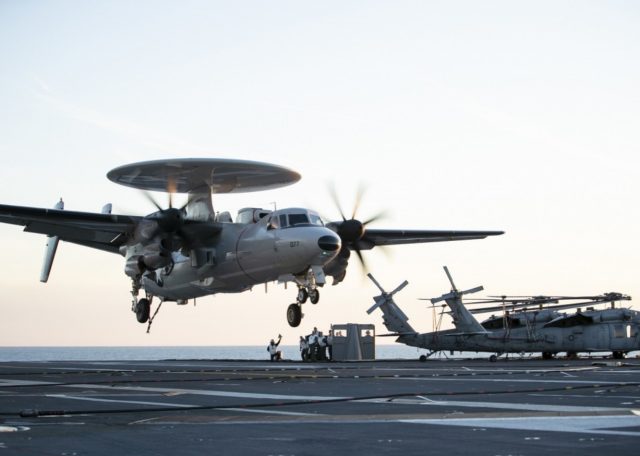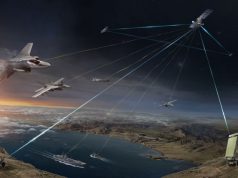
The US Navy is mulling software upgrades and radar tweaks that would equip its fleet of E-2D airborne early warning (AEW) aircraft with manned/unmanned teaming (MUM-T) capabilities.
According to a solicitation released on the government contracting site this week, the navy intends to negotiate with and award a contract to Northrop Grumman for the design, software development, and testing of the E-2D mission computer and displays.
The efforts are required to support an end-to-end lab demonstration of manned/unmanned teaming, along with technical support to develop and verify radar calibration files for an aircraft belonging to the navy’s VX-20 air test and evaluation squadron based at Naval Air Station Patuxent River, Maryland.
Naval Air Systems Command said Northrop, as the only builder of the E-2D, was the only vendor with the required knowledge, experience, and technical expertise to carry out the work. The period of performance would be 6 months after contract award.
Depending on what kind of UAS it would be paired with, MUM-T would enable the navy’s all-weather, carrier-based tactical battle management airborne early warning, command and control aircraft to provide even greater capabilities to detect enemy ships or aircraft, or operate in A2/AD environments.
The announcement is also in line with the navy’s expectations of having a carrier air wing composed of 40 percent unmanned aircraft. The number was given by deputy chief for warfighting requirements Vice Adm. James Kilby during a hearing on Capitol Hill following the navy’s release of the “Unmanned Campaign Framework,” a strategy for making unmanned systems a trusted and integral part of the service’s warfighting concept.
“We think we could get upwards of 40 percent of the aircraft in an air wing that are unmanned and then transition beyond that. So I think the logical step would be trying to follow a logical crawl, walk, run,” Vice Adm. James Kilby said on Thursday.


























